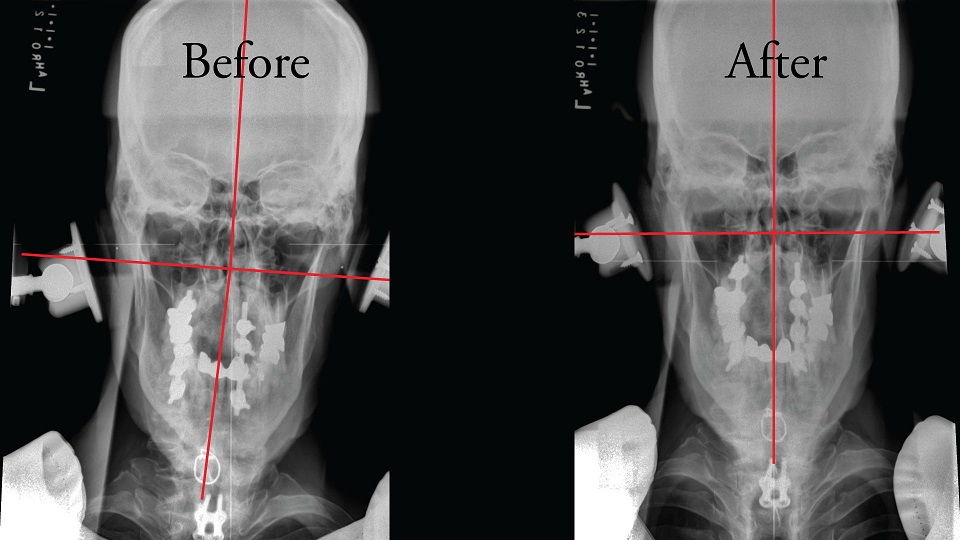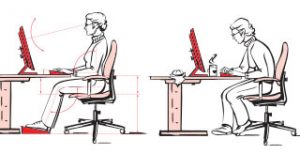- New Patient Line:
- (907) 336-0200
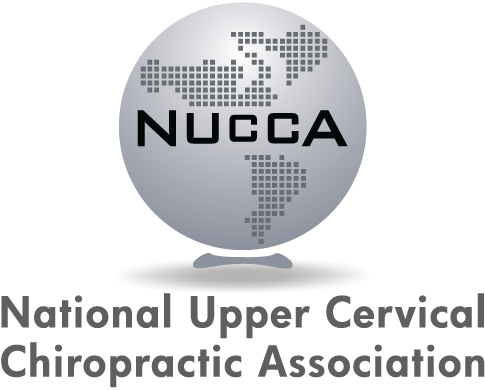
Unless you’re completely lost on the internet, you’ve ended up on this page because there’s something you’d like to know about NUCCA. Maybe this is the first you’ve ever heard about NUCCA. Maybe a friend has recommended it and explained a little, but you’d like to know more. Whatever the case, the purpose of this article is to explain what NUCCA is. I hope it will be helpful for you.
What is NUCCA?
NUCCA is a chiropractic technique. Chances are you already know that, but I do have new patients often ask me, “Is this like chiropractic?” And the answer is yes, NUCCA is a chiropractic technique.
A chiropractic technique is simply a method for accomplishing the chiropractic goal. There are a lot of chiropractic techniques. They vary widely in the details, but they all have the same goal, which is the correction of vertebral subluxation.
Vertebral subluxation is misalignment of spinal vertebrae. More specifically, it’s a misalignment that involves the nerve system. A vertebral subluxation will always interfere with the nerve system’s ability to function appropriately.
That’s a very basic definition. A more thorough explanation of vertebral subluxation helps to make sense of how it’s able to impact the function of the human body in so many ways. But for our purposes the basic definition will do.
NUCCA is actually N.U.C.C.A. It stands for National Upper Cervical Chiropractic Association. “Cervical” refers to the cervical spine, which is your neck. “Upper cervical” is the top part of the neck.
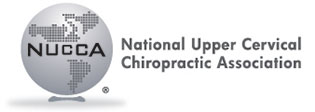
NUCCA is an upper cervical chiropractic technique. It is a method specifically for correcting vertebral subluxation in the top part of the neck, particularly the junction between the skull and the first vertebra (the atlas vertebra).
On the other side of the coin there are full-spine chiropractic techniques. This is the most common type of chiropractic, and the type that most people are familiar with. Upper cervical and full-spine chiropractic are not necessarily opposed to one another–in fact, there is a lot that upper cervical chiropractic and full-spine chiropractic agree upon. The significant differences stem from different understandings of the technical details.
Why does NUCCA exist?
NUCCA exists because of the “technical details” mentioned just above. Getting into the nitty-gritty of those details would be too much for the purpose of this article, but there are several basic factors that I think will make the important points clear.
The most significant factor is that the upper cervical portion of the spine is very different from the rest of the spine. The important differences are mechanical and neurological factors that result in the upper cervical subluxation causing more damage to the central nervous system than any other area of the spine.
The brain, brain stem, and cranial nerves are right next door to the upper cervical vertebrae. When they misalign they can affect the function of these delicate structures in ways that the rest of the spine cannot. All the nerves that connect the brain to the entire body have to travel through the funnel of the upper cervical spine. This places them at risk when alignment of that area is compromised. In addition, the upper cervical spine plays a major role in the maintenance of balance and equilibrium.
It should also be mentioned that the circulation of blood to and from the brain, as well as the circulation of cerebrospinal fluid, is critical to normal function of the brain. Misalignment of the upper cervical vertebrae can affect the ability of blood to get oxygen to the brain and the ability of cerebrospinal fluid to clear metabolic waste.
To really appreciate the unique position of the upper cervical spine, we also have to take into account that in addition to this concentrated diversity of neurological function, there is also a much greater level of mechanical freedom of movement than is seen anywhere else in spine. The range of motion available in terms of head rotation, flexion, extension, etc. is almost frightening when you consider the important structures coursing through the neck.
Under normal circumstances the design of the upper cervical spine provides an amazing balance between freedom of movement and protection of the delicate neurological structures contained within. But when an accident or injury is forceful enough to damage the soft-tissues that normally prevent spinal misalignment, the function of the nerve system can be seriously impaired.
NUCCA exists because the typical methods used for adjusting the spine are not only insufficient for addressing the upper cervical spine, but they can also result in greater misalignment and further neurological detriment when they violate mechanical principles required for the accurate replacement of displaced vertrebrae.
Beginning between the 2nd and 3rd vertebrae in the neck and continuing down the rest of the spine there are a set of joints between each pair of vertebrae called facet joints. Basic and Clinical Anatomy of the Spine, Spinal Cord, and ANS explains that “[facet joints] are rather small joints, and although they allow motion to occur, they are perhaps more important in their ability to determine direction and limitations of movement that can occur between vertebrae.” That is to say, facet joints don’t have a large range of motion. When you put them all together they allow for the appropriate movement of the spine, but individually their movement is minimal. Facet joints also restrict the direction of movement, what we might refer to as “degrees of freedom” of motion. And there are vertebral discs between these segments of the spine which provide further support and limitation of movement. In other words, the spinal joints from C3 on down have relatively small range and freedom of movement.
On the other hand we have the joints of the upper cervical spine which are articulations between the skull and the 1st vertebra, and the 1st and 2nd vertebrae. The 1st and 2nd vertebrae (called the atlas and axis) each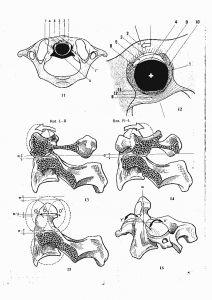 have a unique shape that differs significantly from the other spinal vertebrae. We also have no disc between them, and instead of facet joints there is a complex chain of joints with three axes and three degrees of freedom of movement.
have a unique shape that differs significantly from the other spinal vertebrae. We also have no disc between them, and instead of facet joints there is a complex chain of joints with three axes and three degrees of freedom of movement.
The complex neurology of the upper cervical spine, coupled with its unique morphology and biomechanics requires a specialized approach when vertebral subluxation occurs in this area. The NUCCA procedure is designed specifically to account for the unique characteristics of the upper cervical spine so that a safe and accurate correction can be achieved.
When should NUCCA be considered?
There are two broad circumstances in which NUCCA deserves to be considered as a potential solution to pain and other health problems.
#1 When it just makes sense
You don’t need a advanced degree in biomechanics to realize that the head and neck are particularly vulnerable when it comes to accidents and injuries. Motor vehicle accidents, awkward slips on an icy sidewalk, and rambunctious children ambushing you from behind are a very small part of the list of accidents and injuries that make up our day to day lives. Most of the time our bodies are able to absorb the impact of these events without significant injury. But there are times when the force of impact is too much, and the head and neck are injured in a way that results in vertebral subluxtion.
When problems arise directly following an accident or injury the connection is hard to miss. These are the times that common sense tells us that we should check the neck.
But there are other instances in which problems take some time to develop, and their connection to a specific accident or injury might be more difficult to pin down. In these cases it makes sense to work along a spectrum from non-invasive to invasive options. Upper cervical chiropractic doesn’t add anything to the body and it doesn’t take anything away. It simply corrects a problem in order to restore normal function in a very non-invasive manner. It’s what you might call non-therapeutic. Sometimes more invasive, therapeutic treatments are necessary. Sometimes medication may even be necessary. At other times surgical procedures are appropriate. We always want to apply the proper solution, but in the process of identifying what that solution is, it’s wise to begin with less invasive options in order to avoid unnecessary application of more invasive procedures.
It should also be pointed out that the accidents and injuries that children experience can result in the same problems that we experience as adults. Except that it’s often more difficult to identify these problems in children because they don’t always have the language and experience to explain what they’re feeling in the same way that adults are able. And because they’re in the process of rapid growth and development, it’s even more important that spinal problems (especially those that affect their nerve system) are corrected as soon as possible. The good news is that the active growth and development of children also results in their being particularly responsive to upper cervical chiropractic care. Once the problem is corrected, kids often heal much more quickly and completely than adults.
#2 When nothing makes sense
Dealing with health problems that no one can make any sense of can be frustrating, maddening and depressing all at once. Bouncing from specialist to specialist and test to test is exhausting, and when no answers result from all that effort it can leave you feeling defeated. Any upper cervical chiropractor will tell you that a lot of their patients are people who have spent years failing to find a reason behind or solution to their problems. They end up at the upper cervical chiropractor because they “tried everything else.”
Sometimes these are chronic problems that just don’t respond to typically treatment. Other times there are multiple problems that all occur at once and seem to have no connection to one another. There are even times when doctors are so stymied that they tell the patient that it must just be all in their head. Cases like this should always be evaluated by a chiropractor that focuses specifically on the upper cervical spine. The broad and far-reaching consequences of the vertebral subluxation’s damaging influence on the central nervous system can and does result in complex patterns of dysfunction in many people. Correcting the subluxation and allowing the nerve system to begin functioning normally can help some of these people begin to recover from problems that otherwise seem unexplainable.
How does NUCCA work?
The NUCCA procedure involves a series of steps that are designed to determine if you’re a good candidate for upper cervical chiropractic care, and to make an accurate and stable correction when that is the case.
Consultation
An initial conversation with the chiropractor is important to determine you past and currently health history. Clearly defining the desired results is important in order to determine if those results can be achieved. The goal is to determine, as accurately as is possible, if upper cervical chiropractic is a good match.
Screening evaluation
If the chiropractor believes that there is a reasonable liklihood of success based on the problems and desired results discussed during the consultation, an examination will be done. The NUCCA examination is a screening to determine if the vertebral subluxation (specifically called the atlas subluxation complex, or ASC) is present.
While symptoms that result form the ASC often differ greatly from person to person, the presence of a phenomenon called spastic contracture is consistently present in all cases of ASC. The screening process is neither difficult nor uncomfortable and involves several structural measurements to determine if spastic contracture is present. These measurements will typically include a supine leg length measurement, and measurement on an apparatus called an anatometer. Cervical thermography and additional postural evaluation is often a part of the process as well.
Radiographic analysis
If both the consulation and evaluation process indicate that an individual meets the criteria required to move forward, the next step is to acquire a set of X-rays. The pre-correction X-rays that are taken for the NUCCA protocol are the most important part of the examination process. They allow the chiropractor to assess the severity and complexity of the subluxation and to measure the direction and degree of misalignment. These 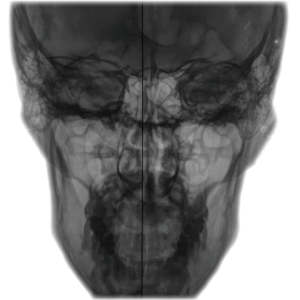 are the important details that provide the information required to engineer an adjusting formula that will accurately correct the misalignment factors.
are the important details that provide the information required to engineer an adjusting formula that will accurately correct the misalignment factors.
Typically the initial visit will conclude with the acquisition of these X-rays. Some time is necessary for the chiropractor to anaylze the X-rays, so under normal circumstances a follow-up visit will be scheduled at this time. This follow-up visit will include a review of the X-ray findings and the initial correction.
Correction
The first time that a NUCCA adjustment is made the chiropractor will explain the process and what you can expect. This includes lying on your side on a low table with  your head positioned in a particular way on the NUCCA adjusting table. The adjustment is made by hand and is very gentle. As a patient you will feel a light contact just under the ear, but little else. There is no aggressive manuevering or twisting, thrusting or cracking. The time it takes to make the correction will vary from person to person, from as little as a minute to perhaps several minutes in some cases.
your head positioned in a particular way on the NUCCA adjusting table. The adjustment is made by hand and is very gentle. As a patient you will feel a light contact just under the ear, but little else. There is no aggressive manuevering or twisting, thrusting or cracking. The time it takes to make the correction will vary from person to person, from as little as a minute to perhaps several minutes in some cases.
Once the chiropractor has determined that the correction has been made, several measurements will be taken to verify this. These measurements will be identical to those performed during the initial evaluation. If the measurements verify that a good correction has been made, the next step is to confirm the correction by taking a post-correction X-ray. The post X-ray is taken after the initial correction only. Subsequent adjusting will not require additional X-rays. If the post X-ray confirms that a complete and accurate correction has been made, the process is complete. If any misalignment remains on the post X-ray the chiropractor will make any necessary changes to the adjusting formula and continue to work toward a complete correction.
Follow-up
Future follow-up visits provide for monitoring of the stability of the correction and the response of the patient. During these visits an adjustment will be made when it is found that the correction has been lost. It is very important that a stable correction is achieved so that normal, uninterrupted nerve system function and structural alignment are present as consistently as possible.
Where to find a NUCCA chiropractor?
My practice, Rumsey Spinal Care, is located in Anchorage, Alaska. At the present time this is the only NUCCA practice in the state of Alaska. I serve people from all over the state, and I try to make a point of being able to accomodate those who aren’t able to get to Anchorage easily, or on a regular basis. If you have any questions or would like to set up a consulation over the phone or in the office, you can contact me by phone at 907-336-0200 or by using the contact form just below.
Outside of Alaska the availability of NUCCA chiropractors varies from state to state, but a good place to start looking is the NUCCA website, located here. You’ll find a map-based tool that can help locate NUCCA chiropractors in the United States and even a few elsewhere.

